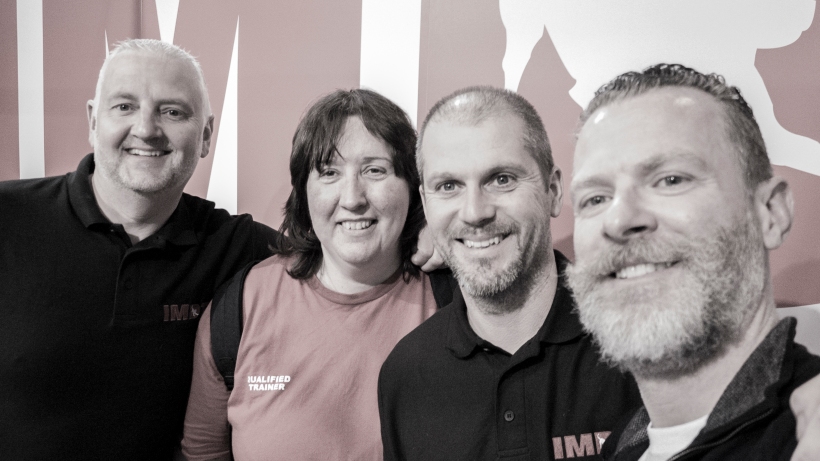
…On arrival, each owner/dog gets a 7-10 metre long line and goes for a ‘mooch’
A Mooch.
It makes no sense to try and ‘hit the ground running’ as soon as the dogs/owners come into the class environment. It’s not fair, it’s unnecessary pressure, and it’s just plain silly!
Regardless of standard, I’ll normally start a class with a good 5-10 minute mooch.
Long line on the dog, have a wander, say nothing to the dog.
If your dog needs to sniff, cool, let ‘em.
If they need to look around so they can settle into the environment, good for them, it’s what they need to do, don’t get in the way. (comfort beats obedience, every time)
We tell the owners to say nothing to the dog for a minute or two. Too many classes start with opposing motivations as:-
a) the dog has to acclimatise to the environment but
b) the Trainer tells the owner to try and get the dog’s attention.
This can only result in:-
a) Conflict
b) Frustration ( for all 3 parties; dog, owner, Trainer)
c) A lesser standard being reinforced because the owner just becomes grateful for ‘anything’ from the dog.
d) The dog learning to ignore the constant repetition of her name or cues.
Imagine walking into a buzzing nightclub with lasers, dancers, jugglers, the opposite sex, THE OPPOSITE SEX!….and the second you walk through the doors your friend Ryan is immediately asking you the same questions you’ve already answered in the car, or trying to get you to do ‘that-funky-new-handshake-you’ve-previously-been-working-on-together-at-home”, don’t let your owners in class be like Ryan. He’s weird.
Chill out.
We ask the owners to say nothing to the dog for the first 2 -3 minutes, then when they DO say something out of the blue eg: “COME!” they immediately feed the dog then say ‘off you go’ and continue to say nothing to the dog.
Then we have:-
a) No frustration for any of the 3 parties
b) Success to build upon
c) No conflict for the dog. It’s a win/win. Allowed to investigate the environment AND get food from the monkey!
d) The dog is learning that 100% of the time a cue comes from the owner’s mouth, it’s 100% good news (not 99% Charlie Brown’s Teacher yadda yada )
After a few reps of – nothing —–“come!”= food —– nothing —– “come!’= food—–nothing…
We find the dog’s are not so interested in wandering away from mum/dad, (they’ve settled into the environment now) but tend to hang around their owners, looking up at them as if to say “go on, go on, ask me to do something, go on..!” NOW you’re ready to crack on, your instruments are tuned up and ready to go.
A mooch is similar to hearing the orchestra pit tuning up, it often doesn’t start pretty, but is essential if you’re planning to deliver the best product you can.
A mooch is also a nice way to start as it gives you a chance to wander around and catch up with each individual owner, if only to say “Hi” or “You’ve brought your cat by mistake” that kinda thing.
If you’re a control freak (and you are, you’re a Dog Trainer!), you can have a few ‘mooch rules’ but my advice is to try and not make it too prescriptive as then you’re in danger of setting the owner (and therefore the dog) for a success/fail, good/bad start to the class, no need.
Potential mooch rules:-
-Keep a nice slack lead
-As long as it’s safe, follow the dog (unless you’ve just said ‘come!’)
-only stop/stand still if the dog starts to run or you’ve got to the end of your long line (slow the dog by ‘padding’ the lead, no need for abrupt halts)
-only say ‘come!’ every 2-3 minutes, nothing else.
Once you’ve done a few reps of ‘come!’/feed, and you can see the dog’s voluntarily ‘checking-in’ with their owners, now you can change it up…
Suggest to the owners, “carry on with your mooch, but rather then saying ‘come!’ wait, see if your dog checks- in with you. If they do, say “good!” jog backwards a little and treat the dog when they get to you. (you’re ‘jogging backwards’ to add a little animation and therefore focus to the exercise. Another layer of interest can be rather than putting the food into the dog’s mouth, as the dog runs towards the owner, have the owner toss the food behind them* (or between their own legs (funky!) to keep the dog’s acceleration nice and high )
*be careful though, we once had a guy tied up with the long line like a rodeo calf by his exuberant Dogue De Bordeaux and as far as we know, he’s still there now
…
Now everyone’s in, everyone’s settled, everyone’s mooched and everyone’s happy.
We can begin ……


